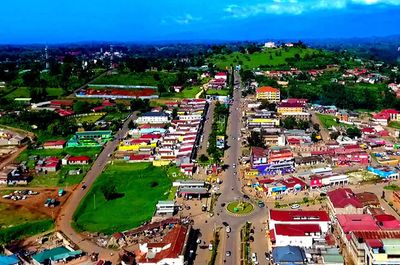
The Philippines is preparing for the arrival of Typhoon Fung-wong, prompting the evacuation of over 900,000 people. The storm, locally known as Uwan, is expected to make landfall on Sunday evening and has been upgraded to a super typhoon, with sustained winds reaching 185 km/h (115 mph) and gusts up to 230 km/h (143 mph).
The Philippine meteorological agency has warned of a "high risk of life-threatening and destructive storm surges," with waves potentially exceeding 3 meters (10 feet), as Fung-wong moves northwest toward Luzon, the country’s most densely populated island.
The eastern Bicol region bore the brunt of the storm first on Sunday morning, before it passed the Polillo Islands later that day. In preparation, several schools have either shifted classes online or cancelled them entirely, and nearly 300 flights have been grounded.
Although Fung-wong is expected to weaken slightly after making landfall between Baler and Casiguran, it is likely to remain a typhoon as it moves across Luzon. Forecasters predict more than 200mm of rainfall in parts of Luzon and 100–200mm in Metro Manila, raising the risk of severe flooding and landslides.
Heavy rain and strong winds have already begun to affect eastern areas of the Philippines. Authorities have expressed particular concern for regions likely to face a direct hit, including Catanduanes, an island in the Bicol region, where extreme conditions were reported on Sunday morning. Residents in low-lying and coastal areas have been urged to seek higher ground.
In the Aurora region, reporters spoke with 21-year-old hotel worker Hagunoy, who described the precautions taken ahead of the storm. Police had ensured all guests were evacuated from coastal hotels in Sabang, leaving the buildings deserted by Sunday morning. Staff secured gates and tied windows with rope to prevent damage from the strong winds, while Hagunoy prepared to leave for safety after guarding the property as long as possible.
Central Aurora saw more than 200 people take shelter at a local sports center, including many parents with young children who do not remember the devastation of Typhoon Haiyan, which claimed over 6,000 lives in 2013.
Fung-wong follows closely on the heels of Typhoon Kalmaegi, which caused widespread destruction. Heavy rains triggered landslides and flash floods, particularly in poorer neighborhoods. At least 204 people died in the Philippines due to Kalmaegi, with more than 100 still missing. Five fatalities were reported in Vietnam, where strong winds uprooted trees and damaged buildings.
In response to Kalmaegi and in anticipation of Fung-wong, the Philippine government declared a state of calamity nationwide. This measure allows agencies to access emergency funds more quickly and fast-track the distribution of essential supplies.
For many residents, the recent destruction has heightened fears about the incoming typhoon. "We decided to evacuate because the recent typhoon brought floods in our area, and now I just want to keep my family safe," said Norlito Dugan, who is sheltering in a church in Sorsogon, Luzon. Maxine Dugan added, "I'm here because the waves near my house are now huge."
The Philippines lies in a region of the Pacific prone to tropical cyclones, with roughly 20 forming annually, half of which affect the country directly. While climate change does not necessarily increase the number of storms globally, warmer oceans and a warmer atmosphere can make cyclones more intense, potentially leading to stronger winds, heavier rainfall, and greater coastal flooding.













Aldrige Kennedy
Leave a Comment
Your email address will not be published.